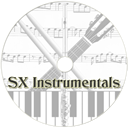Filter on ALL, SYNTH, DRUM, SAMPLER or MISC |
Total list currently 2405 items in 330 Brands |
Kurzweil | K250 |
Description | In the mid-1970s, Raymond Kurzweil invented the first multi-font reading machine for the blind, consisted of the earliest CCD flat-bed scanner and text-to-speech synthesizer. In 1976, Stevie Wonder heard about the demonstration of this new machine on The Today Show, and later he became the user of first production unit, Kurzweil Reading Machine. It was the beginning of a long-term relationship between them. In 1982 Stevie Wonder invited Raymond Kurzweil to his new studio in Los Angeles, and asked if "we could use the extraordinarily flexible computer control methods on the beautiful sounds of acoustic instruments?" In response to this query, Raymond Kurzweil founded Kurzweil Music Systems, with Stevie Wonder as musical advisor. A prototype of the Kurzweil K250 was manufactured for Stevie Wonder in 1983. It featured Braille buttons along with sliders (potentiometers) for various controls and functions, an extensive choice of acoustic and synthesized sounds to choose from, a sampler to record sounds onto RAM and a music sequencer utilizing battery-backed RAM for compositional purposes. During production of the Kurzweil K250 at least five units were manufactured for Stevie Wonder. The Kurzweil K250 was officially unveiled to the music industry during the 1984 Summer NAMM trade show. Shortly thereafter the Kurzweil K250 was commercially manufactured until 1990 and was initially available as an 88-key fully weighted keyboard and as an expander unit without keys called the Kurzweil K250 XP. A few years later into production a rack mount version called the Kurzweil K250 RMX a.k.a. K250 X also became available. The Kurzweil K250 is generally recognized as the first electronic instrument to faithfully reproduce the sounds of an acoustic grand piano. It could play up to 12 notes simultaneously (also known as 12-note polyphony by utilizing individual sounds as well as layered sounds (playing multiple sounds on the same note simultaneously, also known as being multitimbral). Up to that point in time the majority of electronic keyboards utilized synthesized sounds and emulated acoustical instrument sounds created in other electronic instruments using various waveforms produced by oscillators. Five other manufactured digital sampled sound musical instruments were available at that time: E-mu Corporation's E-mu Emulator and E-mu Emulator II; Fairlight Corporation's Fairlight CMI; and New England Digital's Synclavier I and Synclavier II. One of the first keyboard samplers, it was great then and still good today. It has an adjustable sample rate of 5kHz to 50kHz which means 100 to 10 seconds of sampling time, respectively. Its sampler was also 16-bit. Many other samplers of this time had much more limited sampling/digital audio specs which made this synth a very prominent keyboard. By todays standards, however, this synth has many limitations such as samples are stored directly on Apple Mac disks only. But it had extremely modern features that make this synth easy to use and quite versatile. It has a 12-track sequencer, chorus, transpose, tune, 36 ROM sounds, 96 pristine quality acoustic instruments, 341 presets, 12 voice polyphony, 2 LFO's per voice, variable sampling rate, truncation, looping, velocity crossfading, full 88 weighted keyboard, MIDI and more! Of course the newer K2000 series is supposed to be better, but the K250 still seems like a major contender even in todays modern synthesizer era. |
| Brand | Kurzweil |
| Model | K250 |
| Device | Synth |
| Type | Keys |
| Engine Type | Digital |
| Engine | Sample, FM |
| Voices (max) | 12 |
| LFO | 2 |
| Engine Detailed | Digital Sampler Synthesizer / FM / sampler / workstation |
| Sampler | 16 bit, 1 to 4 MB (100 seconds @ 5kHz) |
| FX | 2 |
| Memory | 36 ROM sounds, 96 instruments, 341 presets |
| Recording | 12012 notes / 40 songs / 12 tracks |
| Keys | 88 |
| Key type | Keys |
| Velocity | Y |
| Aftertouch | No |
| Midi | I-O-T |
| Produced: | 1984 - 1990 |
| Legend: | Obvious | Y: Yes, N: No, N/A: Not Applicable | |
| VCO | Voltage Controlled Oscillator | DCO | Digital Controlled Oscillator |
| LFO | Low Frequency Oscillator | Sub | Sub Oscillator |
| VCF | Voltage Controlled Filter | VCA | Voltage Controlled Amplifier |
| Velocity | As with a piano, the harder you hit a key, the louder the sound, unlike most organs which always produce the same loudness no matter how hard you hit a key. | Aftertouch | Pressing a key after you activated it. Channel Aftertouch, no matter which key, it will send a Channel message. Poly Aftertouch, sends the pressure per key instead of the whole channel. |
| Values for OSC, LFO, Filter, Envelope are per voice unless stated otherwise. | |||





